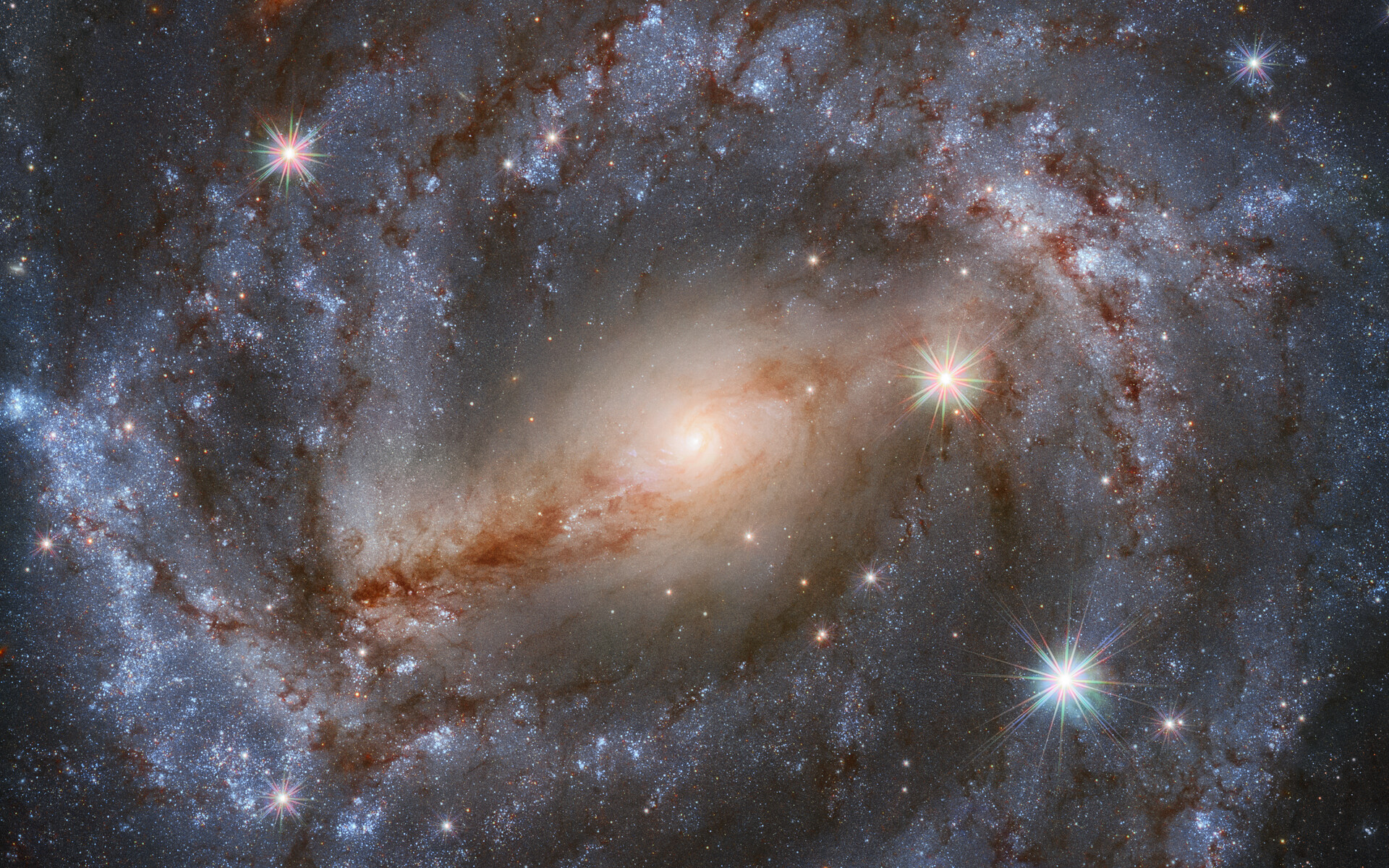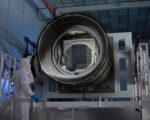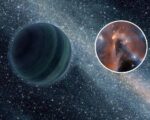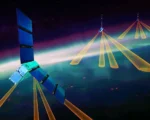The spiral galaxy NGC 5643, located roughly 40 million light-years away in the constellation Lupus, has been vividly captured by the NASA/ESA Hubble Space Telescope. This “grand design spiral” galaxy boasts a symmetrical structure defined by its striking, well-organized spiral arms. These arms are adorned with vibrant, young blue stars interspersed with reddish-brown dust clouds. Within the galactic disc, regions of intense star formation are evident, showcasing pinkish hues that signify the presence of ionized hydrogen gas illuminated by young, massive stars.
While the galaxy’s beauty is readily apparent in visible light, its true nature is revealed in other wavelengths. According to a NASA blog post, ultraviolet and X-ray imaging have uncovered an active galactic nucleus at the heart of NGC 5643, powered by a supermassive black hole. Gas swirling toward the black hole heats up to extreme temperatures within the accretion disk, emitting radiation across the electromagnetic spectrum. This dynamic process, particularly prominent in X-rays, highlights the galaxy’s energetic core.
Surprisingly, the brightest X-ray source in NGC 5643 is not the supermassive black hole itself but a separate, smaller black hole identified as NGC 5643 X-1. Observations from ESA’s XMM-Newton Observatory suggest that this object, with an estimated mass of 30 Suns, is part of a binary system. It pulls gas from its companion star, forming an accretion disk that emits intense X-rays, outshining even the galactic nucleus in this wavelength.
These findings emphasize the complexity and diversity of activity within NGC 5643. From its elegantly structured spiral arms and regions of vibrant star formation to its hidden black holes emitting powerful radiation, this galaxy exemplifies the richness of the universe. Observations like these continue to deepen our understanding of galactic evolution and the interplay between massive celestial objects.


















